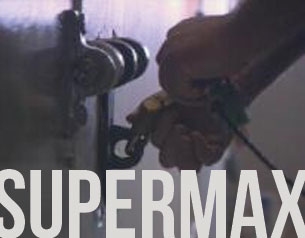Supermax
How do you deal with the most dangerous criminals? Should they be rehabilitated or should the emphasis be on punishment? Supermax is Australia's most feared and toughest prison. We go inside.
 How do you deal with the most dangerous criminals? Should they be rehabilitated or should the emphasis be on punishment? Supermax is Australia's most feared and toughest prison. It holds just 34 prisoners: the so-called worst of the worst. Under radical new proposals, the jail is redefining the way terrorists are incarcerated. In this compelling documentary, we profile the high tech, futuristic prison.
How do you deal with the most dangerous criminals? Should they be rehabilitated or should the emphasis be on punishment? Supermax is Australia's most feared and toughest prison. It holds just 34 prisoners: the so-called worst of the worst. Under radical new proposals, the jail is redefining the way terrorists are incarcerated. In this compelling documentary, we profile the high tech, futuristic prison.
It's almost as hard to get into Supermax as it is to get out. This 21st century jail-within-a-jail is exclusively reserved for the most sinister of criminals - a who's who of felons including serial killers, terrorists and gang leaders. "They're the people who present the most extreme risk to security and safety in our system", states prison commander Brian Kelly.
The first thing that strikes you when you enter the prison is the silence. Occasionally, a prisoner's catcall pierces the quiet. The security regime overwhelms all. Everyone, including staff, undergoes at least two daily x-rays to stop weapons being smuggled in. Even the food is X-rayed. "Initially, I found it quite an invasion of my personal space and privacy", confides prison officer Paul Cubitt. "But I came to quickly."
Prisoners at Supermax spend between 16 and 22 hours a day locked up in their cells alone. No one-on-one contact between inmates and prison officers is allowed. "It's a corruption prevention strategy", explains prison commander Mark Wilson. "When you've got a small group of very manipulative inmates that are face-to-face with the same staff day in, day out, familiarity can develop."
Access to phone calls, televisions and other privileges are also strictly controlled. Privileges can be withdrawn without any notice for any transgressions. It's a system that leaves the guards open to allegations of playing God. "There's a perception that it's mind games. That's not what it's about. It's about controlling their behaviour," explains Wilson.
The high-security Supermax unit is housed inside another prison, Goulburn. Inmates at Goulburn may be deemed less dangerous but there's still an abiding sense of threat. "The rules of society don't apply there", states former prisoner Christopher Binse. "It's dog-eat-dog, It's a jungle." Inmates are separated along racial lines to stop them murdering each other. "It's a very difficult and challenging place", states former parole officer Tony Vinson.
Under the vigilant watch of guards, gangs vie for supremacy. "There's alliances with certain groups within the prison system", states former inmate Christopher Binse. 'White Pride' gangs were formed in opposition to other ethnic gangs. Now, the ethnic groups are separated but it's a system that has been criticised. "You need to address the causes of disturbance and the feelings of hostility between different groups", argues Professor David Brown.
Over the past few decades, crime rates may have fallen but the prison population has doubled. Imprisonment rates amongst vulnerable groups, like the mentally ill, have risen disproportionately. Prison officers at Goulburn face an eternal dilemma: how to square the primary demand for public safety against the rights and welfare of prisoners.
FULL SYNOPSIS
